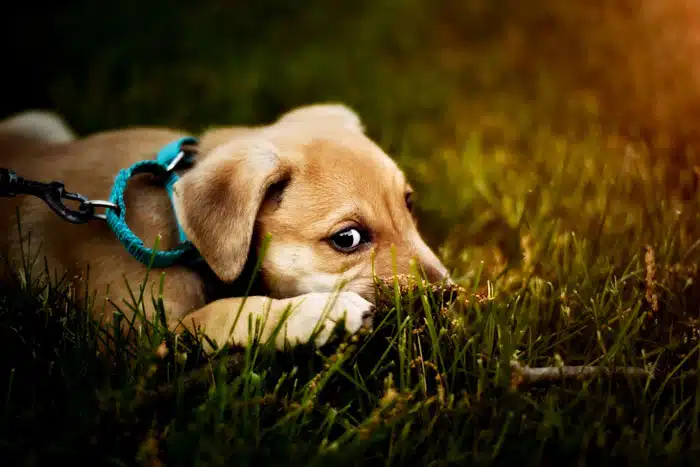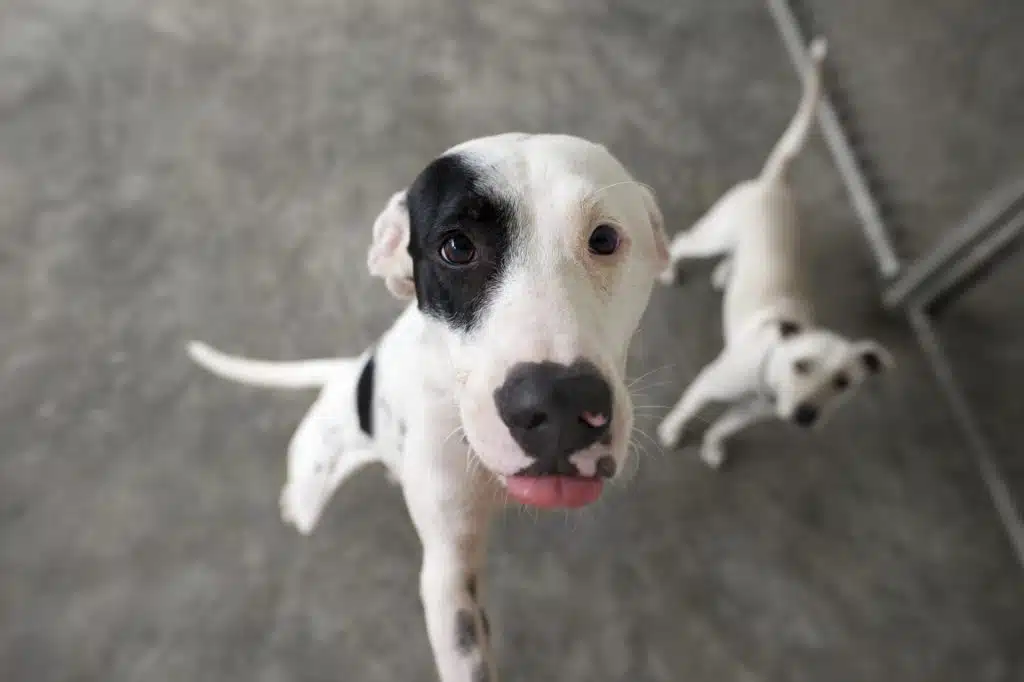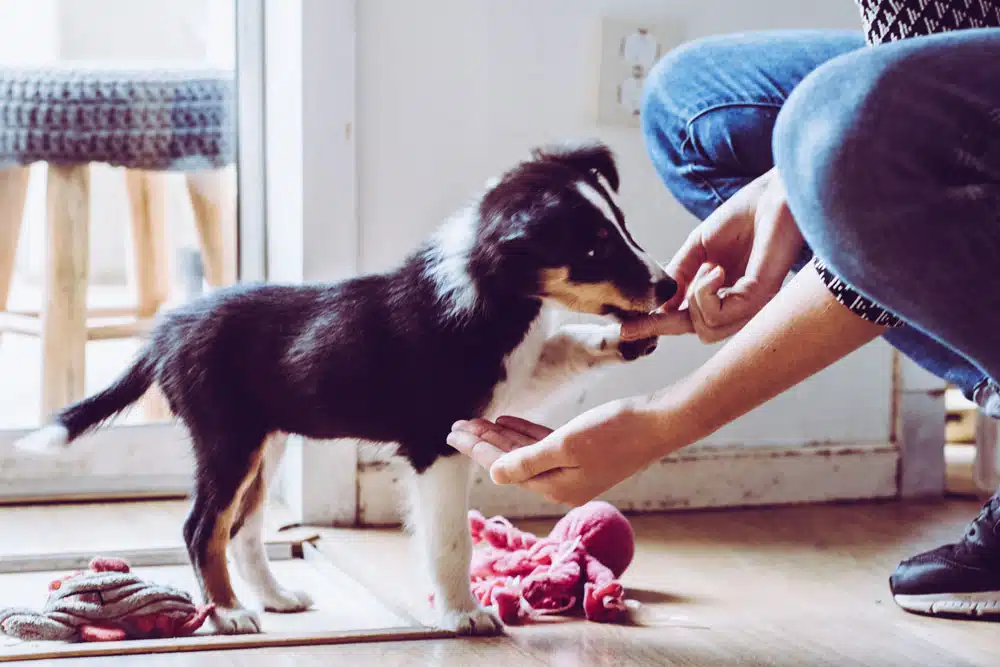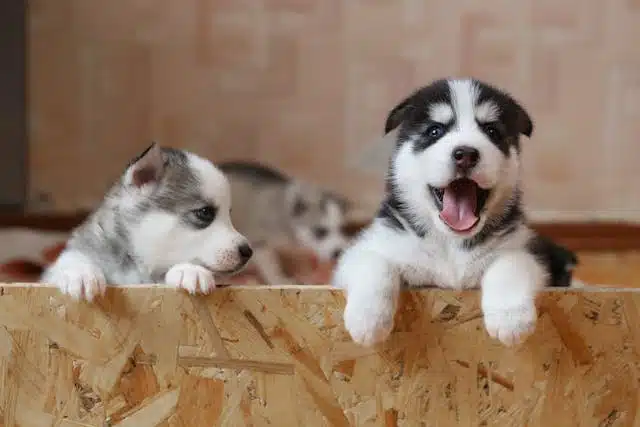Home » Blog » Pet » Pet Parenting Lifestyle » 4 Puppy Training Tips
Categories
Tags
animal welfare
breed profile
buying a car
buying a pet
Car
car accessories
car care
car features
car insurance
Car safety
car sales
car service
cat
cat behaviour
cat body language
Cat Breeds
cat food
cat insurance
comprehensive car insurance
Dog
Dog Behaviour
dog body language
Dog Breeds
dog food
Dog Insurance
dog training
eco friendly cars
Kitten
New Car
pet accessories
pet activities
Pet Adoption
pet breeders
pet days of the year
pet fun stuff
Pet Health
pet insurance
pet parenting
Pet Safety
pet services
Puppy
rescue pets
road safety
road trip
safe driving
Recent Blog:
Facebook Posts
13 hours ago
Are intestinal worms setting up camp in your dog’s gut without paying rent? Here’s how to spot the main culprits and get rid of them too:![]()
![]() Preventing, Identifying and Treating Intestinal Worms in Dogs - bit.ly/43YjCKu
... See MoreSee Less
Preventing, Identifying and Treating Intestinal Worms in Dogs - bit.ly/43YjCKu
... See MoreSee Less
Preventing, Identifying and Treating Intestinal Worms in Dogs
www.pd.com.au
Intestinal worms, such as roundworms in dogs are one of the least glamorous topics on the planet. These intestinal parasites that basically use our dogs
PD Insurance
with Dogs West.
2 days ago
We enjoyed meeting #breeders #doglovers and members at the Dogs West Open Day. Special thanks to our partner Dogs West for organising an incredible event. There is still time to enter our pawsome competition. Click here for details: bit.ly/4covyce![]() #PDinsurance #dogswestopenday #dogswest
... See MoreSee Less
#PDinsurance #dogswestopenday #dogswest
... See MoreSee Less
3 days ago
Did you know? The Manx is a breed that is known for its lack of a tail, which is caused by a genetic mutation.
... See MoreSee Less
Do you have the cutest most adorable new Christmas present – a puppy? If you answered yes, then we’re just as excited as you. A new puppy is a bundle of joy and love… and pee and poo. If you’re pondering how to tail-or train your puppy, then look no further. Here are four age-appropriate puppy training tips, just for you.
1. Basic commands for puppy training
At seven to eight weeks old, your puppy is ready to begin learning basic commands like “sit” and “stay” and “come”. Your puppy is full of lots of energy and noise (here’s why dogs bark), but a short attention span. So keep sessions short. Five sessions a day of five to ten minutes each is plenty.
Reward your puppy with bite size treats to signal they’re doing the right action. Keep the treats small by cutting them into pea size pieces or using kibble.
Treats at the ready, here’s how to begin…
Train your pup to sit
Hold a treat near your pooches’ nose to get her attention. Raise the treat higher while commanding “sit”. As she lifts his or her head toward the treat, she will automatically drop her bottom to the ground. If this doesn’t work, repeat the sequence. Only give the treat once she sits.
Teach your dog to stay
Once pooch has mastered the “sit” command, tell her to sit, and take one or two steps back. Calmly say “stay” and while holding up your hand in a stop position. If she stays for at least a few seconds, she deserves a reward. Continue to practice this command while increasing the distance, duration and number of distractions over time.
Train your dog to come
Use your treat to lead the puppy a few steps toward you while saying “come”.
You can reward them and keep practising while gradually increasing the distance she must cross to get to you.
These foundational skills will help protect your puppy (and your visitors, family and furnishings) at home, as well as once you begin taking them on outings. If you’re interested in enhancing your foundations in dog lingo and tricks, read more about how to speak dog and our simple dog training tricks .

2. Potty training your pup
The Otago Polytechnic School of Veterinary Nursing says You should begin training a puppy as soon as they come home, regardless of age.
How to do? Create a defined space for where to go as well as a safe zone for when you can’t watch your pup. Puppy proof your safe zone – keeping it free of cables, chemicals, and non-puppy-friendly furniture. Lay down some puppy pads away from their water bowl (dogs don’t like to go near their food/drink).
Now back to the defined space. A designated potty area helps with training (and smells)! Take pup to this same place at the intervals listed below. Once he or she goes in the right spot, reward them with praise or a treat. Reinforcing the right actions is a key element to successful training.
Reward rather than punish
Never punish your pooch for mistakes. This is because reward, not punishment, is the key to a happy, well-trained dog. Dogs won’t always know what the punishment means, and they might become fearful. If you happen to catch your fur baby in the act, clap loudly, then lead them to the correct spot.
Remember to reward afterwards to reinforce good behaviour and the right toileting spot.
Puppies need to go regularly as they have small bladders. Keep a consistent schedule. Take pooch outside every two hours. If he or she has an accident at thirty minutes, reduce intervals to thirty minutes. You can gradually increase the amount of time to one and then two hours from there.
Take your puppy outdoors at the following intervals:
- First thing in the morning
- After meals
- After naps
- Before leaving them on their own at home
- Last thing at night
Any communication from pooch could mean they need to go. Take him/her outside if they start whining, scratching at the door, circling, squatting or showing any signs of restlessness.
Also be sure to clean up any accidents with a detergent that removes smells. Otherwise, little pooch will keep coming back to the same spot to make new spots of poop and pee.
If you live in an apartment or don’t have garden access there are a range of options from puppy pads to artificial grass. If your bow wow will have access to garden, then you may still want to demarcate an area. Unless the whole garden is the area – the choice is yours.

3. Crate training your puppy
Having a den is important to pooch’s sense of wellbeing. A crate provides a secure hidey hole and promotes happy sleeping and resting time. And if you keep it up it also means they have somewhere other than your bed to lay their weary (smelly, furry, slobbery) head.
Not everyone (or their pups) like crates, so it’s not for you, consider other options, like a play pen or safe zone You can begin crate training from as young as eight weeks old.
Some things to remember when using a crate are:
- Never leave pup inside the crate for too long – you don’t want them to soil their bed as this can create a negative pattern.
- Let them out at one-hour intervals and give them time to play before returning to the crate. If you are crate training at night, intervals can be three hours long.
- The crate is a safe space – don’t use it to punish your puppy. If your puppy gets separation anxiety, it might be better to bring them back out. Separation anxiety in pets can cause potty accidents, which will cause setbacks to training.
- Play games to reinforce the crate as a positive space. You can throw the ball into the crate or put a treat inside so puppy gets the hang of going in and out on their own.
- Remove collar and tag when your puppy is in the crate. These are a strangling hazard if they get hooked on the crate.
- When your puppy is active and playful, keep them out of the crate. Only put them in the crate once they are calm. This reinforces the link between the crate and den.
- Give pooch a treat each time they go into the crate.
To help you decide what size crate to buy research how big your puppy will grow. A fully grown dog must be able to stand up and turn around inside their crate.
Still wondering should you crate train a puppy? Read this.
4. Leash training
An important part of any puppy training routine is teaching them to walk nicely. Start training your pup to go on a lead at eight weeks old. Get them used to wearing the collar and lead around the house. This must be supervised as the lead can be dangerous if it hooks onto furniture.
Once puppy is used to the collar, take him around the house and garden on the leash. Try to keep some slack on the leash. If your pooch starts to pull, stop walking. Try out your basic commands during the route, so your puppy gets used to listening to you during a walk. Place treats along a specific route you want pup to take.
Need more info? Read our guide to dog leashes and leads.
Best friends for life
In addition to getting that puppy training under your belt, now is also an important time to do vaccinations. Once you head into the wide world, pooch will be exposed to all sorts of new bacteria and contaminants. Vaccinate according to your vet’s recommended schedule to make sure any trips to the park and beyond don’t spell possible danger.
Once you start going for neighbourhood and park walks you will also need to consider other people and their dogs. Dog fights can happen – even between well-behaved dogs. If your dog is injured or injures another dog or its owner, it’s best to be insured.
Consider a dog insurance plan that will cover you for illness, injury, allergies, third-party liability and more.
Give your dog the protection they deserve so you can enjoy every best friend moment, free of worry.
Share On:




